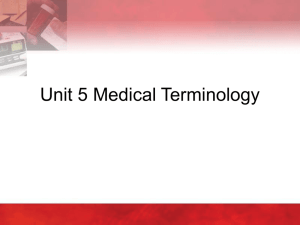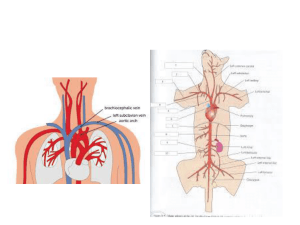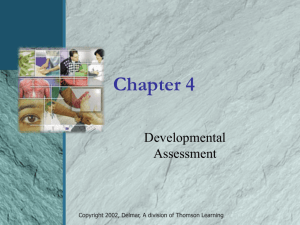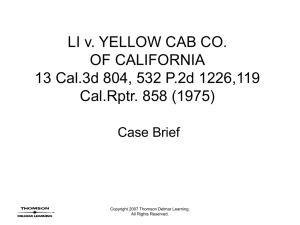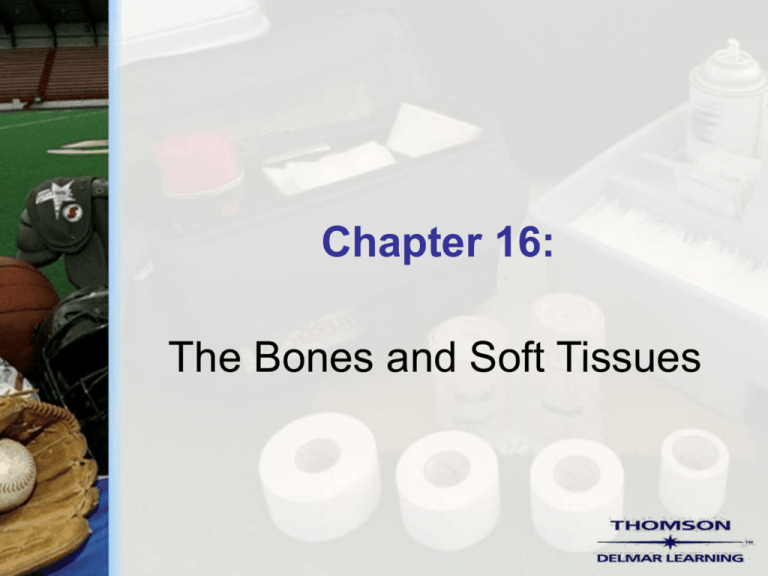
Chapter 16:
The Bones and Soft Tissues
Function of the
Skeletal System
Aids in movement
Supports and protects internal
organs
Produces red and white blood cells
Stores minerals
Copyright ©2004 by Thomson Delmar Learning. ALL RIGHTS RESERVED.
2
Long Bone Anatomy
The structure of bones in the body
allows them to be both lightweight
and strong.
Copyright ©2004 by Thomson Delmar Learning. ALL RIGHTS RESERVED.
3
Structure of Long Bone
Cartilage
Red marrow
Spongy bone
Medullary cavity
Artery
Compact bone
Copyright ©2004 by Thomson Delmar Learning. ALL RIGHTS RESERVED.
4
Structure of Long Bone
(cont.)
Endosteum
Yellow marrow
Periosteum
Copyright ©2004 by Thomson Delmar Learning. ALL RIGHTS RESERVED.
5
Fractures
Fractures are classified based on
the various characteristics of the
broken bone.
Copyright ©2004 by Thomson Delmar Learning. ALL RIGHTS RESERVED.
6
Fracture Types
Simple (closed) fracture: no skin
penetration
– Complete
• Two separate pieces
• Comminuted: three or more pieces
Copyright ©2004 by Thomson Delmar Learning. ALL RIGHTS RESERVED.
7
Fracture Types (cont.)
Simple (closed) fracture: no skin
penetration
– Incomplete
• Greenstick: in children with flexible
bones
• Stress: due to overuse, weakness,
biomechanical problems
• Epiphyseal plate: young people
near growth plate
Copyright ©2004 by Thomson Delmar Learning. ALL RIGHTS RESERVED.
8
Fracture Types (cont.)
Compound (open) fracture:
skin penetrated
Copyright ©2004 by Thomson Delmar Learning. ALL RIGHTS RESERVED.
9
Muscle Action
Most skeletal muscles work in
groups to accomplish a smooth,
coordinated action.
Copyright ©2004 by Thomson Delmar Learning. ALL RIGHTS RESERVED.
10
Moving the Skeleton
Prime mover: A muscle that is a
major contributor to a particular
movement, such as the biceps
brachii for arm flexion. (The strong
brachialis muscle could also be
considered a prime mover of arm
flexion.)
Copyright ©2004 by Thomson Delmar Learning. ALL RIGHTS RESERVED.
11
Moving the Skeleton (cont.)
Antagonist: A muscle that is a major
contributor to the opposite
movement of a prime mover, such
as the triceps brachii (which causes
arm extension).
Copyright ©2004 by Thomson Delmar Learning. ALL RIGHTS RESERVED.
12
Moving the Skeleton (cont.)
Synergists: Muscles that work
together with a prime mover to help
it produce a smooth, steady
movement, such as the
brachioradialis helping the biceps
brachii during arm flexion.
Copyright ©2004 by Thomson Delmar Learning. ALL RIGHTS RESERVED.
13
Moving the Skeleton (cont.)
The role of a particular muscle
(prime mover, antagonist, synergist)
will likely change for different
skeletal joint movements.
For example, the biceps brachii is a
prime mover for arm flexion, but it is
an antagonist for arm extension, for
which the triceps brachii is the
prime mover.
Copyright ©2004 by Thomson Delmar Learning. ALL RIGHTS RESERVED.
14
Muscle Stimulation
Muscles are controlled by
stimulation from neurons of the
nervous system.
Copyright ©2004 by Thomson Delmar Learning. ALL RIGHTS RESERVED.
15
Control of Contraction
The signal to contract a muscle
begins with neurons in the brain or
spinal cord, which communicate
with other neurons that ultimately
reach the neuromuscular junction.
Copyright ©2004 by Thomson Delmar Learning. ALL RIGHTS RESERVED.
16
Control of Contraction (cont.)
Dendrites carry signals toward the
cell body, and the axon (one per
neuron) carries signals away from
the cell body toward other neurons,
muscles, or glands.
Copyright ©2004 by Thomson Delmar Learning. ALL RIGHTS RESERVED.
17
Control of Contraction (cont.)
Though there is only one axon per
neuron, most axons branch at some
point and can stimulate several
other neurons or muscle cells at the
same time.
Many axons, but not all, are
surrounded by insulating Schwann
cells, which also allow for faster
transmission of the nerve signal.
Copyright ©2004 by Thomson Delmar Learning. ALL RIGHTS RESERVED.
18
The Nerve Impulse
The normal, resting nerve cell
(neuron) maintains an unequal
distribution of electrical charge from
the inside (negative) of the cell to
the outside (positive).
Copyright ©2004 by Thomson Delmar Learning. ALL RIGHTS RESERVED.
19
The Nerve Impulse (cont.)
A nerve impulse is a change in the
neuron’s membrane, due to a
series of ion movements, that
makes the outside negative and the
inside positive.
Copyright ©2004 by Thomson Delmar Learning. ALL RIGHTS RESERVED.
20
The Nerve Impulse (cont.)
When the impulse passes (it can
travel the complete length of the
neuron), the membrane returns to
its normal resting state. In other
words, it repolarizes.
Copyright ©2004 by Thomson Delmar Learning. ALL RIGHTS RESERVED.
21

